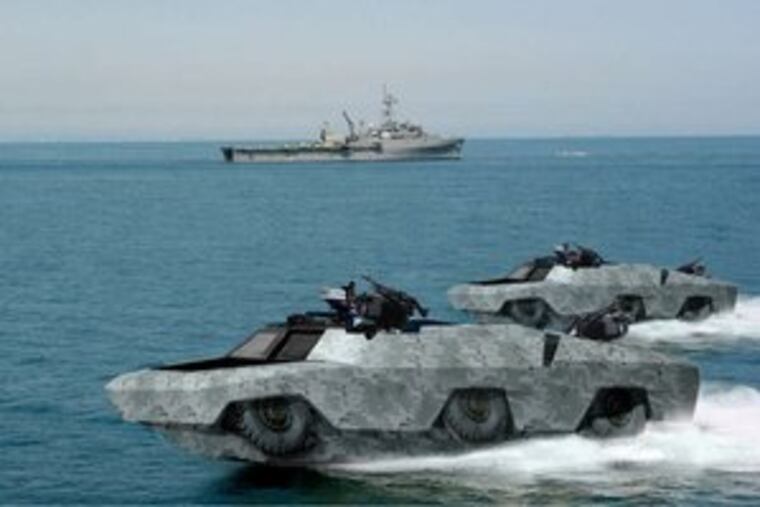Lockheed unit joins effort on amphibious vehicles
The Moorestown division will work on converting civilian vehicles into military systems.

Lockheed Martin's Moorestown division and Gibbs Technologies joined forces yesterday to convert fast civilian amphibious vehicles into military weapons systems.
After demonstrating a civilian version of the vehicle to military brass in recent months, the two companies are confident they can develop something the armed forces will want to buy, said Kenneth B. Ross, a Lockheed spokesman.
Gibbs Technologies Co. was founded in 1995 by New Zealand entrepreneur Alan Gibbs and English automotive engineer Neil Jenkins. It is based in the United Kingdom.
Sir Richard Branson, head of the Virgin Group business empire, drove a prototype of the Gibbs sporty version, called the Aquada, across the English Channel in 2004 and declared: "It is a great beast. It drives fantastically well on land, and then it turns into the most remarkable boat on the water."
The vehicle Branson drove looks like the sports car that became a submarine in the James Bond movie The Spy Who Loved Me.
Military versions would be enlargements of a civilian prototype called the Humdinga, which looks like a rugged sport-utility vehicle. At this point, Gibbs is still seeking to license manufacture of the civilian version. No sticker price has been set.
Rep. Jim Saxton (R., N.J.), a senior member of the House Armed Services Committee, recently rode in a civilian prototype. "It was an impressive vehicle. It is a technological achievement that has potential military value," he said yesterday.
The Gibbs technology breaks from the past by its achievement of high speeds - 100 miles an hour on land and 40 m.p.h. on water for the sporty version - and by its five-second transition between land and water modes.
Gibbs says that it has resolved critical propulsion, cooling and structural problems related to dramatically different needs of land and water travel. Lockheed Martin said it believed that this advanced engineering work had reduced the risk of creating fast amphibious military vehicles, Ross said.
Lockheed Martin Corp. and Gibbs did not disclose projected costs of the planned vehicles.
The Moorestown group will develop ways to expand the existing civilian concepts to carry troops, sensors, and defensive weapons and provide the ability to communicate with other vessels and units on land.
If the collaboration yields something the military will buy, it will add a new dimension to the work at the Moorestown maritime systems and sensors division, where 5,200 people now work, Ross said.
"Our employees think it's cool," Ross said. "We do a lot of work on things related to ships. This proves we can apply the capabilities we have to a lot of new things like these amphibious vehicles."